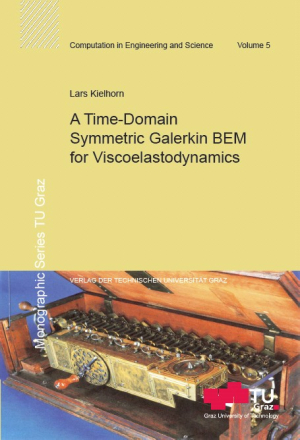The numerical solution of elliptic or hyperbolic boundary value problems
via the Boundary Element Method has a long tradition and is well
developed nowadays. The two most popular discretization schemes of the
underlying boundary integral equations are the Collocation method and
the Galerkin method. While the first one has been adopted to both types
of boundary value problems the latter one has been mainly applied to
elliptic boundary value problems. To close this gap, the present work is
concerned with the derivation of a Symmetric Galerkin Boundary Element
Method (SGBEM) for 3-dimensional mixed initial boundary value problems.
Thereby, the deduction of the method is presented in an unified manner
such that, finally, the scalar wave equation, the system of
elastodynamics as well as viscoelastodynamic problems are covered.
Contrary to unsymmetric Boundary Element formulations, the SGBEM demands
the use of the second boundary integral equation featuring
hyper-singularities. With the help of the Stokes theorem those
hypersingularities as well as the strong singular integral kernels are
transformed into weakly singular integral kernels. Afterwards, the
Boundary Element Method is formulated by using standard techniques for
the spatial discretization and by applying the Convolution Quadrature
Method to the time-convolution integrals. The final numerical tests
verify this method and approve its robustness and its reliability. These
two properties are an essential prerequisite for a successful use of
the proposed Boundary Element Method within a wide range of industrial
applications.
Ausgabe: Open Access E-Book
ISBN: 978-3-85125-245-3
Sprache: Englisch
Erschienen: Dezember 2012
Reihe: Monographic Series TU Graz / Computation in Engineering and Science, Band Vol. 5
The numerical solution of elliptic or hyperbolic boundary value problems
via the Boundary Element Method has a long tradition and is well
developed nowadays. The two most popular discretization schemes of the
underlying boundary integral equations are the Collocation method and
the Galerkin method. While the first one has been adopted to both types
of boundary value problems the latter one has been mainly applied to
elliptic boundary value problems. To close this gap, the present work is
concerned with the derivation of a Symmetric Galerkin Boundary Element
Method (SGBEM) for 3-dimensional mixed initial boundary value problems.
Thereby, the deduction of the method is presented in an unified manner
such that, finally, the scalar wave equation, the system of
elastodynamics as well as viscoelastodynamic problems are covered.
Contrary to unsymmetric Boundary Element formulations, the SGBEM demands
the use of the second boundary integral equation featuring
hyper-singularities. With the help of the Stokes theorem those
hypersingularities as well as the strong singular integral kernels are
transformed into weakly singular integral kernels. Afterwards, the
Boundary Element Method is formulated by using standard techniques for
the spatial discretization and by applying the Convolution Quadrature
Method to the time-convolution integrals. The final numerical tests
verify this method and approve its robustness and its reliability. These
two properties are an essential prerequisite for a successful use of
the proposed Boundary Element Method within a wide range of industrial
applications.




